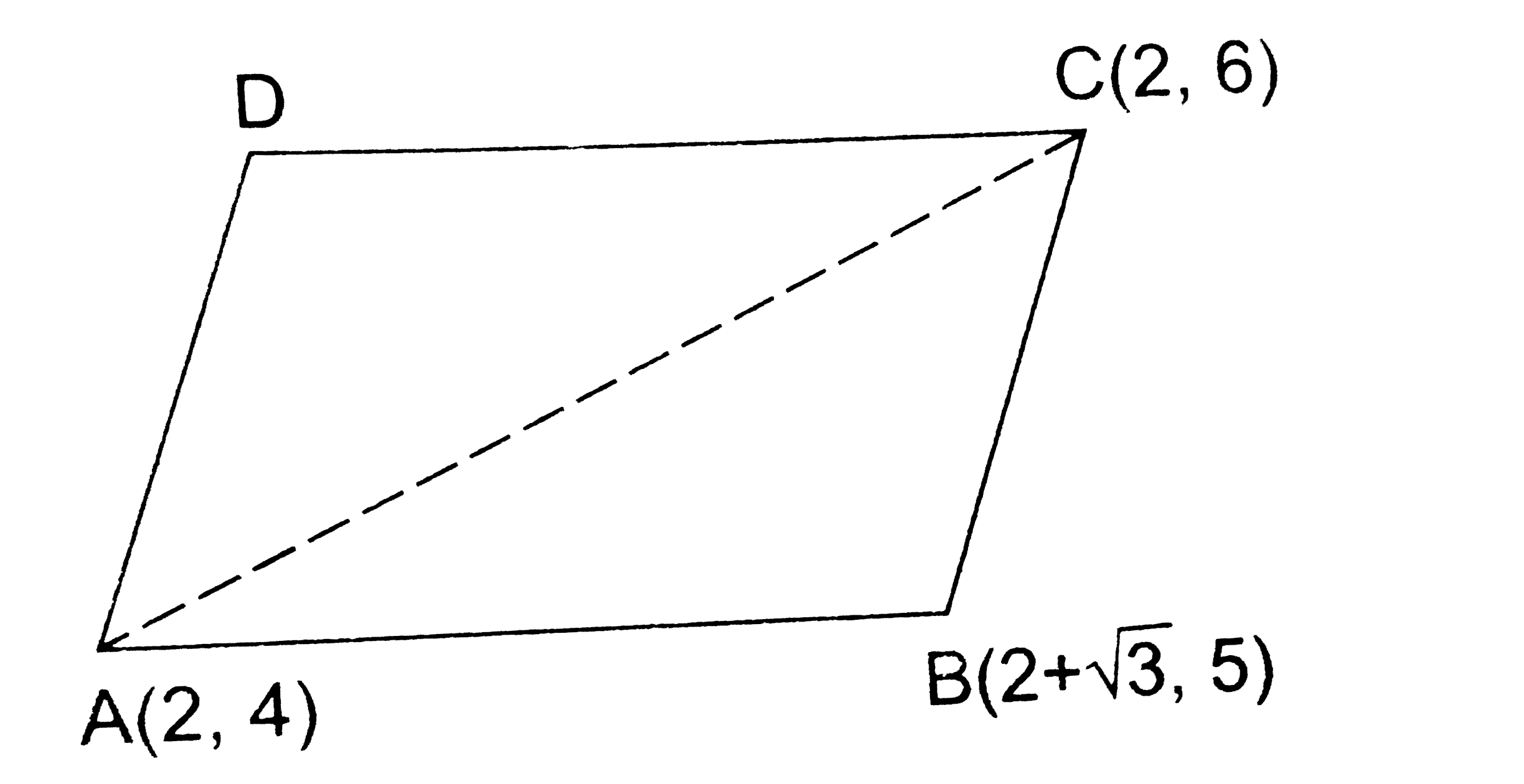Find the area of a parallelogram if three of its vertices are and .
The correct Answer is:A
Let ABCD be the given parallelogram, there of whose vertices are A(2, 4), B(2+ 5) and C(2, 6).

In ABC, we have
sq unit
sq units
sq units.
Hence, the area of the given parallelogram is sq units.
Related Playlists
- BOOK - RS AGGARWALCHAPTER - COORDINATE GEOMETRYEXERCISE - Exercise 6A34videos
COORDINATE GEOMETRY
- BOOK - RS AGGARWALCHAPTER - COORDINATE GEOMETRYEXERCISE - Exercise 6B38videos
COORDINATE GEOMETRY
- BOOK - RS AGGARWALCHAPTER - CONSTRUCTIONSEXERCISE - Test Yourself10videos
CONSTRUCTIONS
- BOOK - RS AGGARWALCHAPTER - HEIGHTS AND DISTANCESEXERCISE - Multiple Choice Questions (Mcq)25videos
HEIGHTS AND DISTANCES
Knowledge Check
- Question 1 - Select One
The fourth vertex D of a parallelogram ABCD whose three vertices are A(−2,3), B(6,7) and C(8,3)is
A(0,1)B(0,−1)C(−1,0)D(1,0)
Similar Questions
Find the area of a parallelogram ABCD if three of its vertices are A(2, 4), B(2+√3, 5) and C(2, 6) .
View SolutionFind the possible pairs of co-ordinates of the fourth vertex D of the parallelogram, if three of its vertices are A(5,6),B(1,2)andC(3,−2)
View SolutionFind the possible pairs of co-ordinates of the fourth vertex D of the parallelogram if three of its verices are A (5,6) , B (1,-2) and C (3,-2) .
View SolutionFind the area of AABC, whose vertices are A(8, -4), B(3, 6) and C(-2, 4).
View SolutionFind the area of quadrilateral ABCD, the co-ordinates of whose vertices are A(1, 2), B(6, 2), C(5, 3) and D(3,4).
View SolutionFind the third vertex of ΔABC , if two of its vertices are A (-2,3) , B(4,5) and its C(1,2) .
View SolutionFind the area of the triangle with vertices A (5, 4), B(−2, 4) and C (2, −6) .
View SolutionThe fourth vertex D of a parallelogram ABCD whose three vertices are A(−2,3),B(6,7)andC(8,3) is
(a) (0,1)
(b) (0,−1)
(c) (−1,0)
(d) (1,0)View SolutionThe three vertices of a parallelogram ABCD taken in order are A(3, -4), B(-1, -3) and C(-6, 2). Find the coordinates of the fourth vertex D.
View Solution

